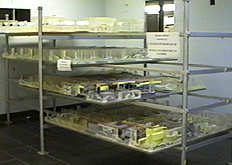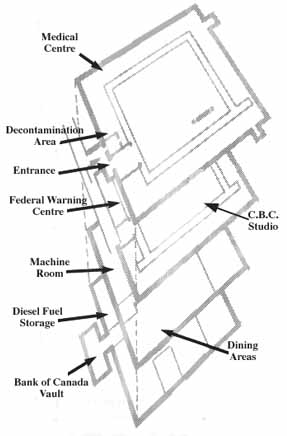
Short timelines for construction forced much of the planning for the facility to be done while work was underway. This model showing the four levels of the bunker was used in the design process.
By the accident of geography and history we find ourselves squarely between the two greatest powers on earth. We have no fortresses facing either. We want to live at peace with our northern neighbours, as we have lived so long at peace with our southern neighbours.
- John George Diefenbaker
September 26, 1960, speech to the United Nations
 |
Short timelines for construction forced much of the planning for the facility to be done while work was underway. This model showing the four levels of the bunker was used in the design process. |

Click on an area to see it.
Visit the Official Diefenbunker Website.
Visit the Grose Educational Media Social Studies Home Page.
Sources:
Diefenbunker Tours. 1977. A Tour Down Through History . Carp, Ontario.
Wente, Margaret ed.. 1975. "I Never Say Anything Provocative " Witticisms, Anecdotes and Reflections by Canada's Most Outspoken Politician. Peter Martin Associates: Toronto.
(The background tile is an image of a B-52 Stratofortress from a stamp issued by the United States Post Office in 1957 to honour the anniversary of the United States Air Force.)
© Grose Educational Media, 1997